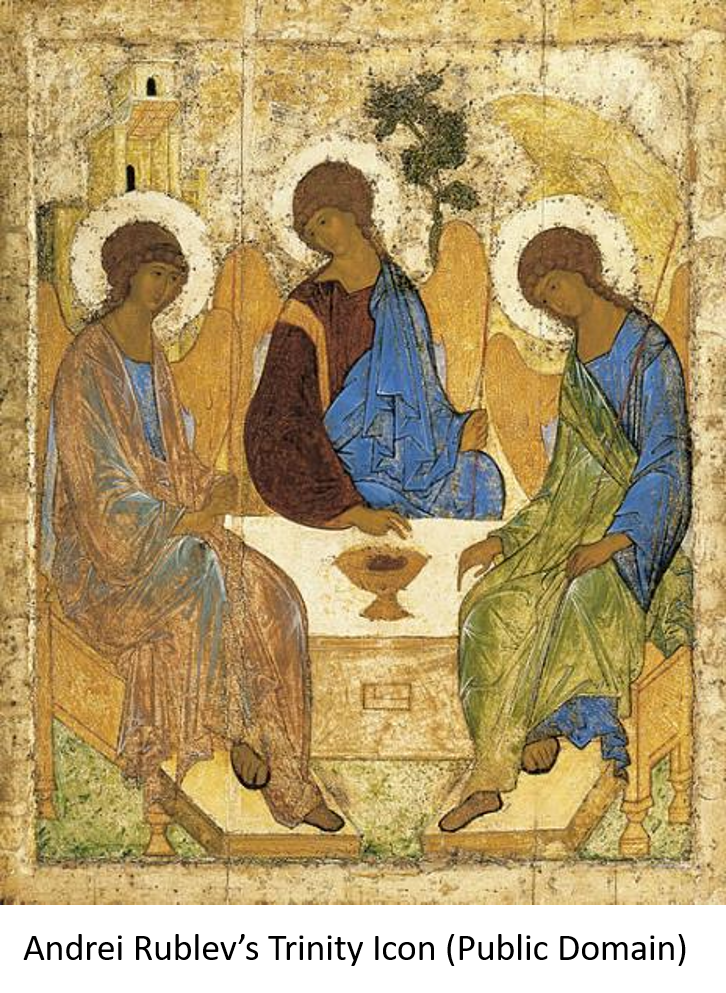Reading: Chapter 2 – Intellectual Antecedents
The Rembrandt painting became an icon for Nouwen, a gate through which he could walk into the house of God. But he could only do so because he
had been practicing that kind of seeing for a very long time. (p. 42)
What a wonderful first week of sharing! Thanks to each of you for your thoughtful comments on our reading and your kind exchanges with each other. It is rewarding to learn how Henri’s readers respond to Gabrielle’s insights and to see how that deepens our understanding of Henri and his work.

This week Gabrielle helps us “see” Henri and his spiritual classic in a new way by introducing us to the techniques and disciplines Henri himself practiced to “see” the world and its people. She probes how Henri’s refined ability to enter into a piece of art through the practice of visio divina or “divine seeing” empowered him to place himself into Rembrandt’s painting—first as an observer and then as each of the main characters. The icon to the left is the one that Gabrielle mentions as she begins the chapter.
Henri’s artistic vision was complemented and enhanced by his doctoral studies in psychology where he mastered the approach pioneered by Anton Boisen to see a person as a “living human document” where our life experiences are written. Henri’s profound insights about Rembrandt’s painting and his own journey result from his “divine seeing” of the “living human documents” that he encountered by gazing at Rembrandt’s masterpiece.
We have the opportunity to apply our newfound understanding of how Henri saw the world as we continue our summer discussion together. We are interested in hearing whatever you gained from the reading. Here are some excerpts and questions that might prompt your thinking.
- Nouwen was on the lookout for “glimpses” of God at all times. (p. 35) . . . (H)e didn’t simply see a beautiful painting–he walked through the gate and into the outstretched arms of the father. (p. 38) When and where have you seen “glimpses” of God on your spiritual journey? Is visio divina a prayer technique you use or might be interested in considering? When you are visit an art museum, are you more like Henri or Sue?
- Perhaps more suitable than any other definition of who he (Henri) was is the term “artist.” (p. 41) (Be sure to read footnote 37 too.) Gabrielle Earnshaw never met Henri Nouwen. She is sharing her insights after two decades of “living with” Henri’s work and speaking with many people who knew him intimately. Does thinking of Henri as an artist help you better understand him, his work, and his impact on you and other readers?
- “When I left I was very thankful that I had had the opportunity to meet this man whose suffering had become a source of creativity.” (p. 47) Gabrielle carefully reflects on Henri’s notes written after his visit with Anton Boisen. Does this give you new insight into Henri, help you to better appreciate the The Return. . . and the impact that book or other Nouwen books may have had on your spiritual journey?
- In seven important ways, Nouwen stood on the shoulders of Boisen while writing The Return of the Prodigal Son. (p. 57) Gabrielle briefly describes each of the seven themes where Nouwen built on the work of Boisen. What is your response to Gabrielle’s analysis? Does her assessment help you to better understand Henri and The Return of the Prodigal Son?
You are invited to share whatever is on your heart and mind–your thoughts on the reading, a reply to the questions, or a response to another’s comment. If you are following along silently, you are most welcome here.
May we all be blessed by another week of sharing.
Ray
